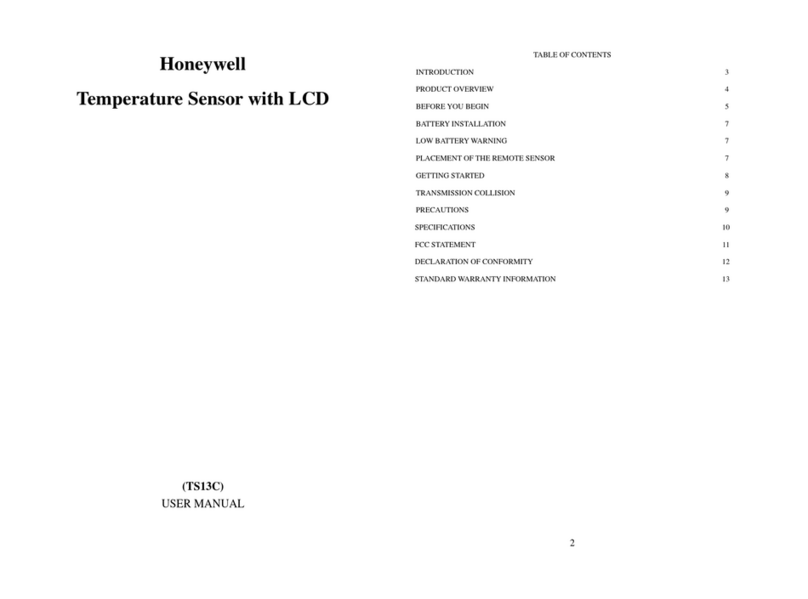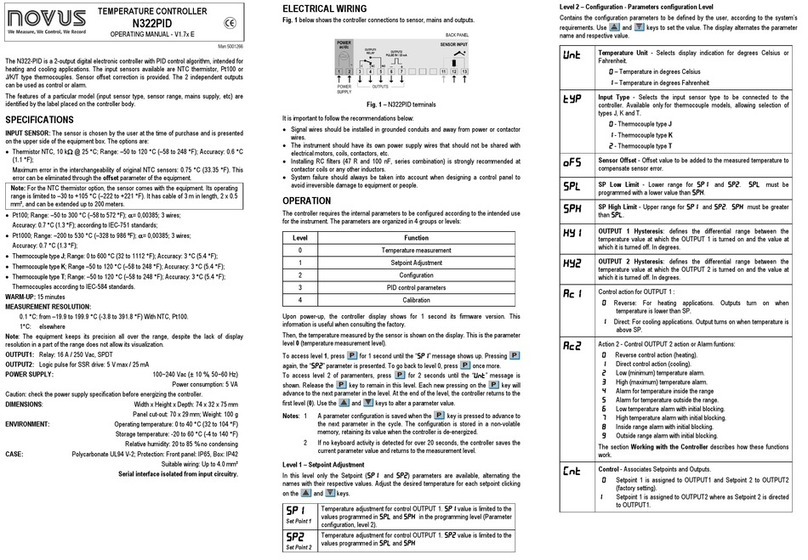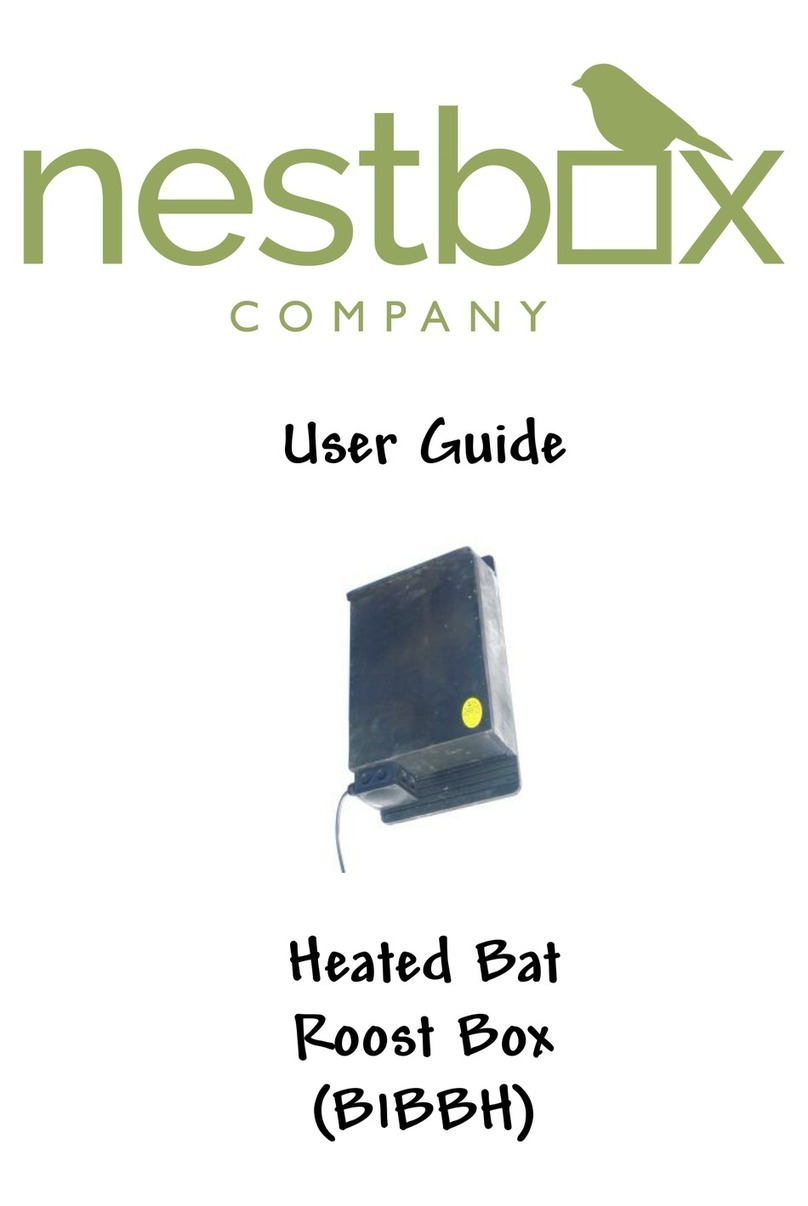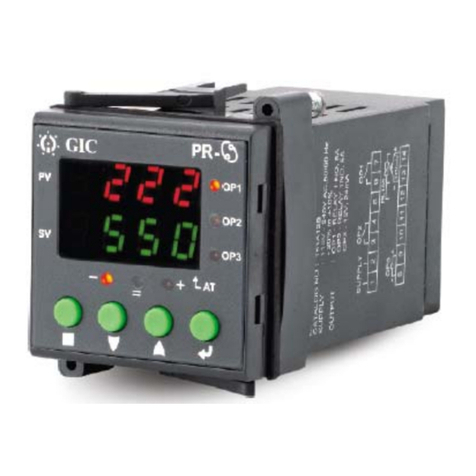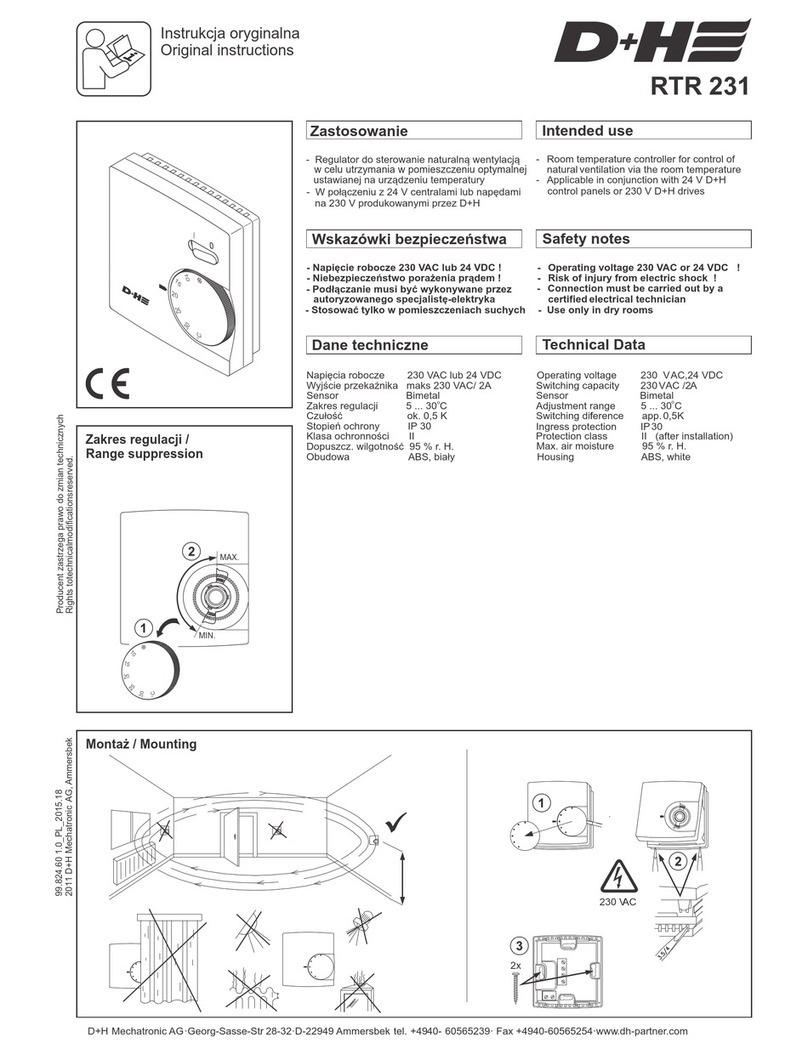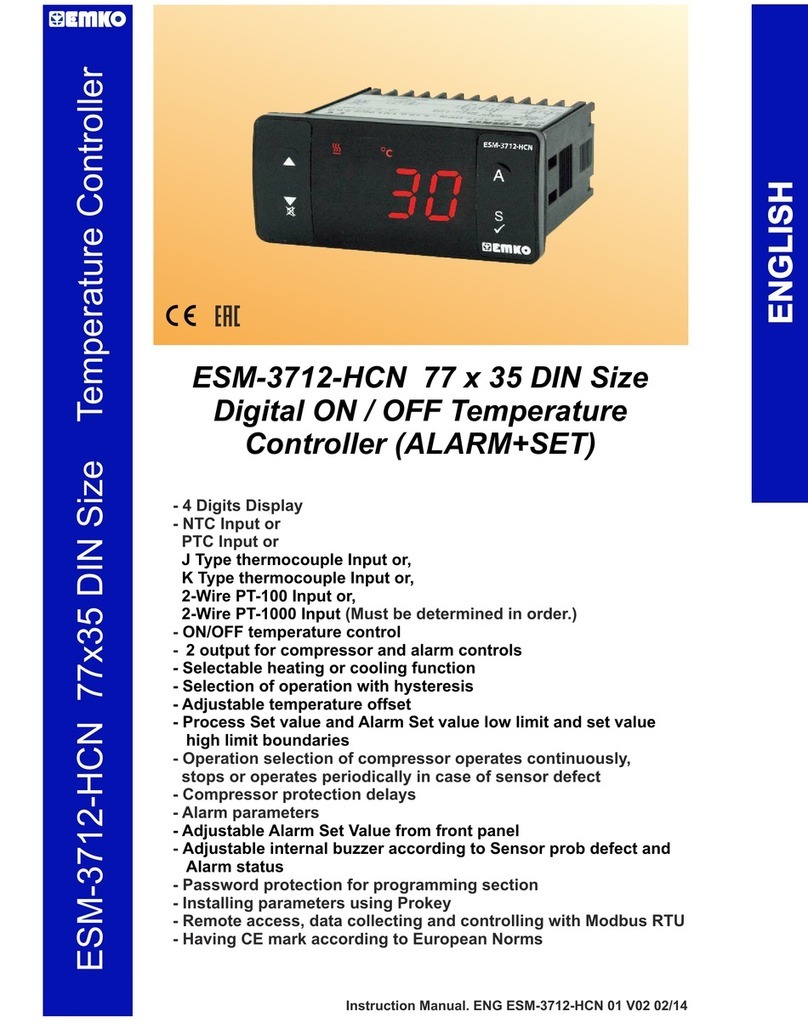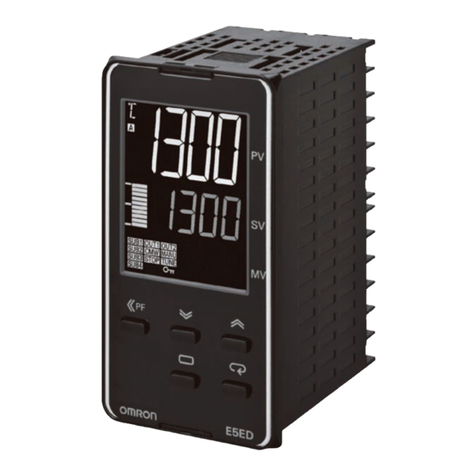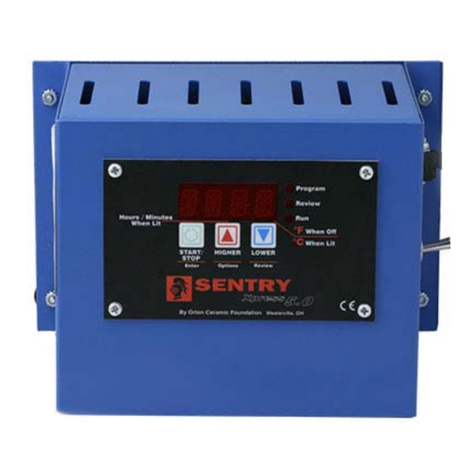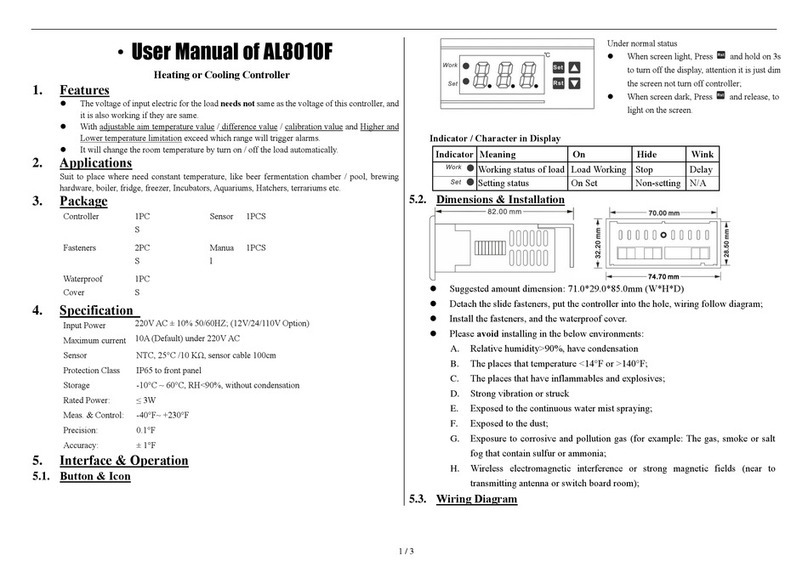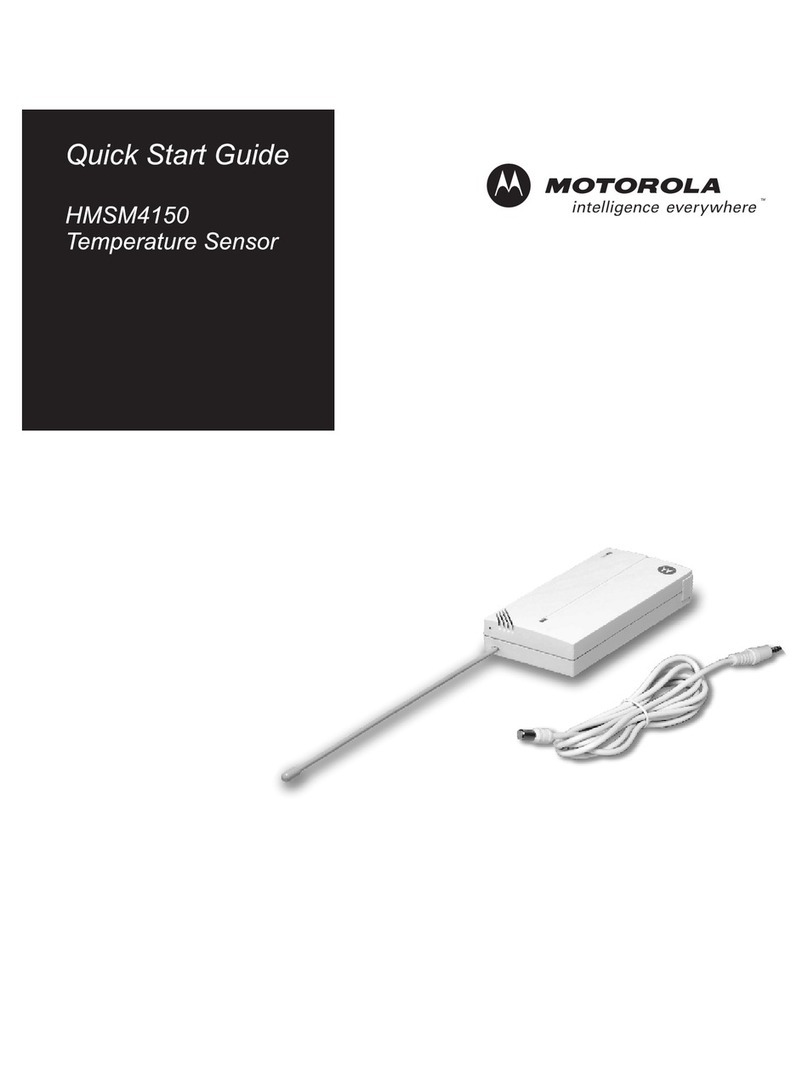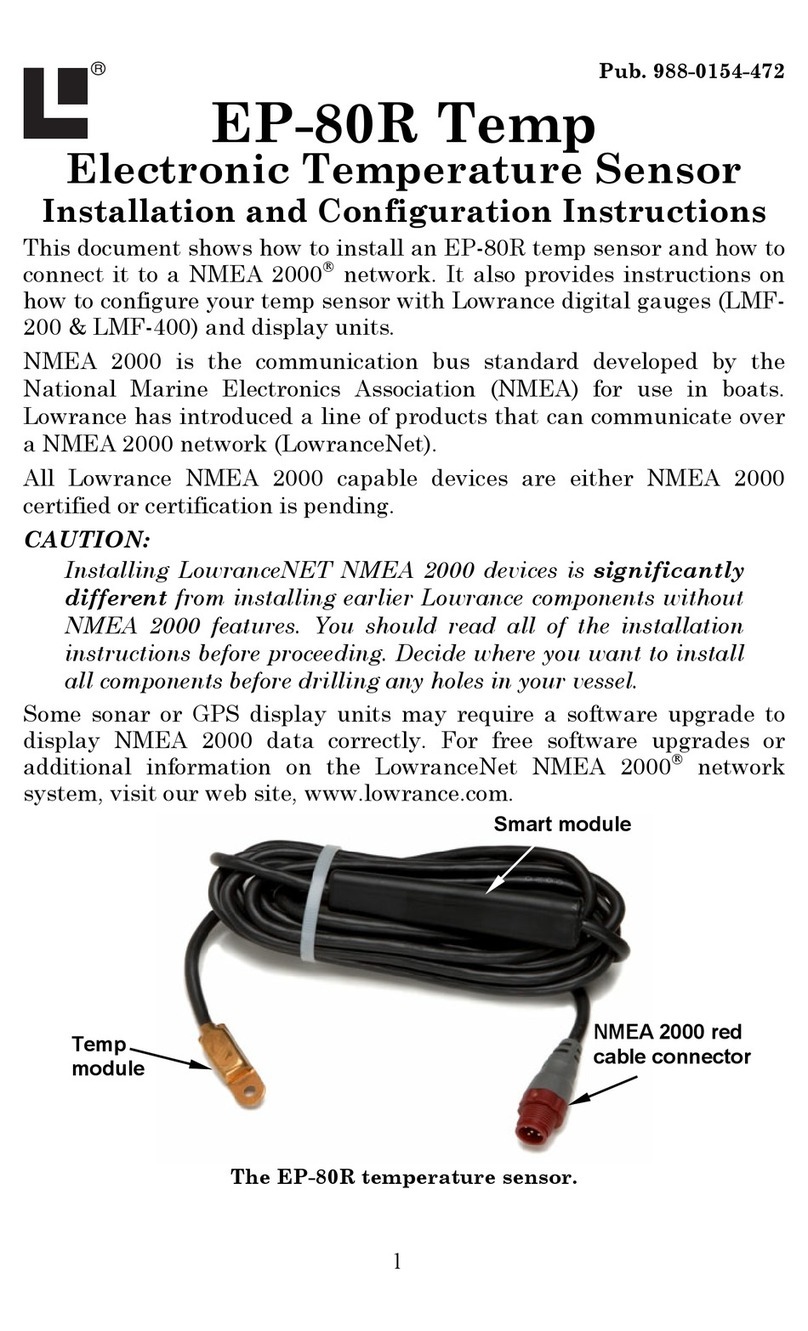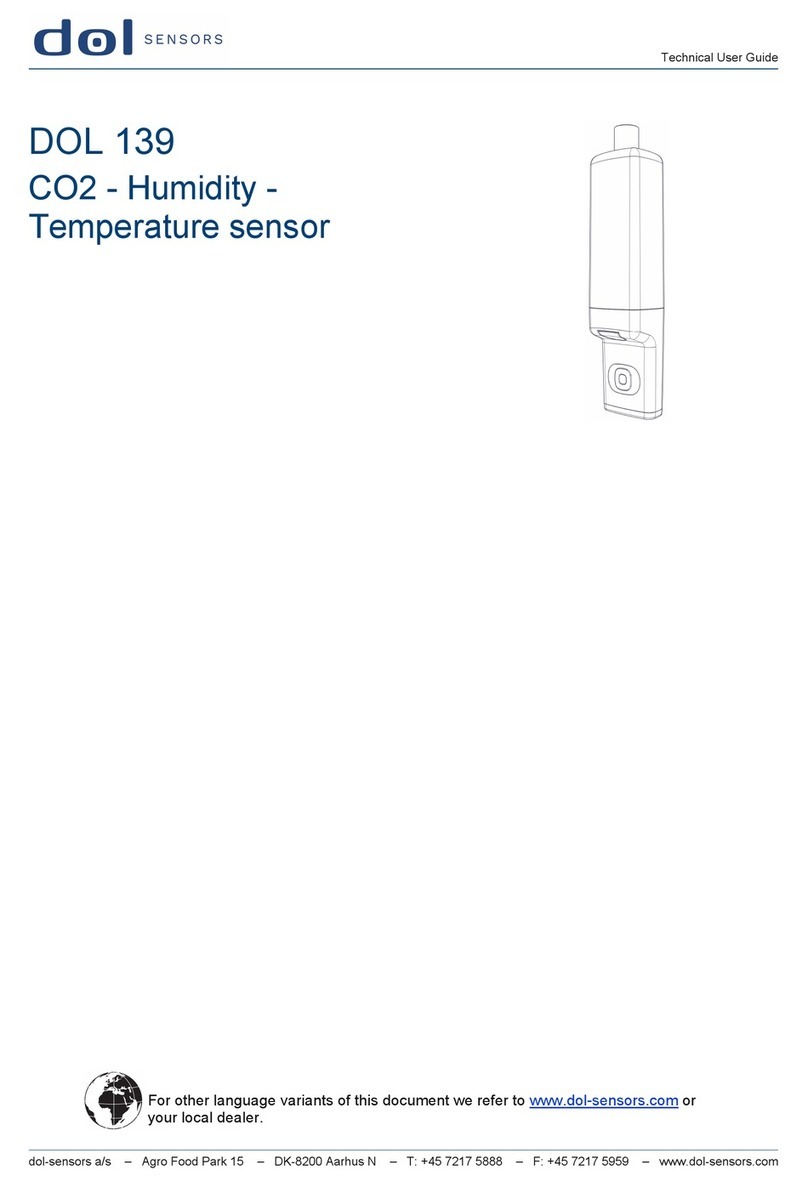Stork ST 501 Series User manual

ST501-QA1TV.07
Temperature controller with timer
Order number 900219.005
Wiring diagram
Product description
Theunitisdevelopedwithafrontcontrolsurfaceasplug-finishedinstallationunitandfulfilsthefunc-
tionof atemperature controller,which canbe switchedon and/oroff withtheintegratedweek-timer.
Daily, the programming cycle can be pre-set with three switch on and off times. The programming
cyclerunsthrough allset positionsinacontinuousloop.Thedisplayindicatesthecurrentselection.
Measurement range: dependent on type of sensor
Front size: 106mm x 68mm
Panel cut-out: 87,5mm x 56,5mm
Connector: screw terminal
1

2

SOFTWARE .07
Adjustment options
Key UP
Pressing this key you can increase the parameter or parameter value or scroll the
parameter list.
Key DOWN
Pressing this key you can decrease the parameter or parameter value or scroll the
parameter list.
Key SET TIME
By pressing this key a specific value is indicated and can be adjusted in conjunction with
the UP and DOWN key. Like this the actual time of day can be adjusted. When in
programming cycle the switching times are adjusted this way.
Within the programming cycle the time settings of the previous day can be copied to the
selected day by additionally pressing the PROG key. While doing so the SET TIME key is
to be pressed first, and than the PROG key in addition.
Key PROG
If this key is pressed for 3 seconds the programming cycle of the switching times is
accessed, always starting with parameter “H0”. Within the programming cycle the time
settings of the previous day can be copied to the selected day by additionally pressing the
SET TIME key. While doing so the SET TIME key is to be pressed first, and than the
PROG key in addition. The display shows “CPY”.
Key “All On”
With this key the switching circle can be activated independently of the programmed
switching times. The display indicates this condition with LED3. By pressing this key
again, the switching times are reactivated.
After mains off the controller returns to the same condition as before.
Key Standby
Pressing this key switches off or on the controller. In standby mode, all exits are switched
off, the LEDs are off and the display shows “AUS”.
The key can be deactivated.

First control level:
Adjustment cycle for time of day and weekday
Selection and adjustment:
By pressing the SET TIME key the time of day can be adjusted by pressing the UP or DOWN key
in addition. After releasing all key the new value is saved. To adjust the weekday you have to
adjust the time further than midnight.
Parameter setting of the control setpoint
Pressing the UP or DOWN key for 3 seconds, the setpoint shows on the display and can be
adjusted with the keys UP and DOWN. The setpoint is stored if none of the keys is pressed for 3
seconds.
Para-
meter
Function description
Adjustment range
Standard
setting
Custom
setting
S1
Setpoint
P4...P5
0.0°C

Second control level:
Programming cycle for switching times
Selection and adjustment:
After access to the programming cycle by pressing the PROG key for 3 seconds the parameter list
can be scrolled with the UP and DOWN key in the following order:
Display LED
H0 0: switching times not activated
1: switching times activated
H11 Monday ON1
H12 Monday OFF1
H13 Monday ON2
H14 Monday OFF2
H15 Monday ON3
H16 Monday OFF3
H21 Tuesday ON1
H22 Tuesday OFF1
H23 Tuesday ON2
H24 Tuesday OFF2
H25 Tuesday ON3
H26 Tuesday OFF3
H31 Wednesday ON1
H32 Wednesday OFF1
H33 Wednesday ON2
H34 Wednesday OFF2
H35 Wednesday ON3
H36 Wednesday OFF3
H41 Thursday ON1
H42 Thursday OFF1
H43 Thursday ON2
H44 Thursday OFF2
H45 Thursday ON3
H46 Thursday OFF3
H51 Friday ON1
H52 Friday OFF1
H53 Friday ON2
H54 Friday OFF2
H55 Friday ON3
H56 Friday OFF3
H61 Saturday ON1
H62 Saturday OFF1
H63 Saturday ON2
H64 Saturday OFF2
H65 Saturday ON3
H66 Saturday OFF3

H71 Sunday ON1
H72 Sunday OFF1
H73 Sunday ON2
H74 Sunday OFF2
H75 Sunday ON3
H76 Sunday OFF3
H0 0: switching times not activated
1: switching times activated
By pressing the SET TIME key the respective time is indicated and can be adjusted by pressing
the UP or DOWN key in addition. After releasing all key the new value is saved.
With parameter H0 the timer can be switched off without changing the switching times.
Adjustment notes:
The programming takes place by analogy with a mechanical timer where a mark can (but not has
to) be set for switch on and switch off timers. The infinite loop of the programming cycle permits a
quick access to the parameters for Saturday and Sunday by pressing the DOWN key.
Note that no switching takes place if the adjusted switch-on and switch-off time of an output is the
same on the same day. A overlapping of the time values is possible but the respective switching
time couple becomes ineffective.
Between “23:59” and “00:00” the switching times have the special position “----“. With this setting
the respective switching time is deactivated and has no more effect on the switching condition of
the respective output. This is used to have outputs switched on until next day for example.
If in the programming cycle the SET TIME key and the PROG key are pressed at the same time,
all times of the day before are copied to the selected day and the display indicates “CPY”. Note
that the key SET TIME has to be pressed first and after that the PROG key.
Leaving programming cycle:
The programming cycle is leaved if the PROG key is pressed again for 3 seconds or if no key is
pressed for min. 60 seconds.

Third control level
Setting of control parameters
Simultaneously pressing the UP and DOWN key for at least 4 seconds opens a parameter list
containing control parameters.
With the UP and DOWN keys the list can be scrolled in both directions.
Pressing the SET TIME key will give you the value of the respective parameter. Pressing also the
UP or DOWN key at the same time the value can be adjusted.
Return to the initial position takes place automatically, if no key is pressed for 60 seconds.
Para-
meter
Function description
Adjustment range
Standard
setting
Custom
setting
P0
Actual value
-
P2
Hysteresis contact K1
0.1... 99.9 K
1.0 K
P4
Control range limitation –
minimum setpoint
-99°C...P5
-99°C
P5
Control range limitation –
maximum setpoint
P4...999°C
999°C
P6
Actual value correction
-20.0...+20.0 K
0.0 K
P19
Key-lock
0: no key-lock
1: key-lock
0
P30
Lower alarm value
-99 ... 999°C/K
-99.0°C
P31
Upper alarm value
-99 ... 999°C/K
100.0°C
P32
Hysteresis alarm circuit
0.1... 99.9 K
1.0 K

Parameter description:
P0: Actual value
The here indicated temperature presents the actual measured value. If the control setpoint is
indicated by the help of parameter A32, the actual value can only be seen with this parameter.
P2: Hysteresis contact K1
The hysteresis can be set symmetrically or one-sided at the setpoint (see A40).
At one-sided setting, the hysteresis works downward with heating contact and upward with cooling
contact. At symmetrical hysteresis, half of the hysteresis’ value is effective below and half of the
value above the switching point (see fig. 1 and 2).
Fig. 1: Heating controller, one-sided hysteresis Fig. 2: Cooling controller, symmetrical
hysteresis
P4: Control range limitation – minimum setpoint
P5: Control range limitation – maximum setpoint
The adjustment range of the setpoint can be limited in both directions. This is to prevent the end
user of a unit from setting inadmissible or dangerous setpoints.
P6: Actual value correction
This parameter allows the correction of actual value deviations caused for example by sensor
tolerances or extremely long sensor lines. The regulation measure value is increased or decreased
by the here adjusted value.
P19: Key-lock
The key-lock allows blocking of the control keys. In locked condition parameter adjustments with
keys is not possible. At the attempt to adjust the parameters despite key-lock the message "==="
appears in the display.
P30: Lower alarm value
P31: Upper alarm value
The exit alarm is a boundary alarm or a range alarm with one-sided hysteresis (see parameter
P32). Both at the boundary alarm and the range alarm, limit values can be relative, i.e. going along
with the setpoint S1/S1’, or absolute, i.e. independent of the setpoint S1/S1’. At boundary alarm the
hysteresis works one-sided inwardly, and at range alarm outwardly.
P32: Hysteresis alarm circuit
Hysteresis is set one-sided at the adjusted limit value. It becomes effective depending on alarm
definition.

Third control level, (A-parameter):
Selection and adjustment
Access to the third control level is granted when selecting the last P-parameter on the second
control level. Continue to press the UP key for approximately 10 seconds until “PA” appears.
Continue to press the UP key and additionally press the DOWN key for about 4 seconds and the
first A-parameter of the third control level is indicated.
With the keys UP and DOWN you can scroll the list in both directions. Pressing the SET TIME key
will give you the value of the respective parameter. By pressing the UP or DOWN key at the same
time the value can be adjusted.
Return to the initial position takes place automatically, if no key is pressed for 60 seconds, or by
simultaneously pressing the UP and DOWN key for approx. 4 seconds.
Para-
meter
Function description
Adjustment range
Standard
setting
Custom
setting
A1
Switch mode contact K1
0: heating contact
1: cooling contact
0
A3
Function of contact K1 at
sensor error
0: relay off
1: relay on
0
A8
Display mode
(all parameter indications
are presented in 0,1°K)
0: integrals
1: decimals in 0.5°C
2: decimals in 0.1°C
1
A19
Parameter lock
0: no lock
1: A-parameter locked
2: A- and P-parameter locked
0
A30
Function alarm exit
0:Boundary alarm, relative
1:Boundary alarm, absolute
2:Range alarm, relative
3:Range alarm, absolute
4:Boundary alarm, relative,
alarm contact inverted
0
A31
Special function at
boundary or range alarm
0:no special function
1:flashing display
2:buzzer
3:flashing display and buzzer
4:like 3, buzzer can be
cancelled
5:like 4, buzzer restarts
after 10 min.
6:like 4, buzzer restarts
after 30 min
0
A32
Setpoint display
0: display shows actual value
1: display shows setpoint S1
0
A33
Type of setpoint S1‘
0: not activated
1: relative to setpoint S1
2: absolute (freely adjustable)
0
A40
Hysteresis mode contact
K1
0: symmetrically
1: one-sided
1
A50
Minimum action time
contact K1 ”On”
0…999 sec.
0 sec.
A51
Minimum action time
contact K1 ”Off”
0…999 sec. 0 sec.
A54
Delay after “Power-on”
0…999 sec.
0 sec.

Para-
meter
Function description
Adjustment range
Standard
setting
Custom
setting
A56
Alarm suppression after
"Power-On"
0…999 min.
0 min.
A60
Sensor type
11: PT100 two-wire
21: PTC
22: PT1000 two-wire
21
A70
Software filter 1: inactive
Average value with
2: 2 measuring values
4: 4 measuring values
8: 8 measuring values
16: 16 measuring values
32: 32 measuring values
64: 64 measuring values
4
A80
Temperature scale 0: Fahrenheit
1: Celsius
1
A87
Function key Standby
0:no function
1:controller On/Off (Standby)
1
Pro
Program version
-
-

Parameter description:
The following values can change the equipment characteristics
and are therefore to be set with utmost care.
A1: Switch mode contact K1
The switch mode for the relays, i.e. cooling or heating function, can be programmed independently
at works. Heating function means that the contact opens as soon as the setpoint is reached, thus
power interruption. At cooling function the contact closes, if the actual value is above the required
setpoint. (see fig. 1 + 2)
A3: Function of contact K1 at sensor error
At sensor error the selected relay falls back into the condition pre-set here. If there is a data-loss in
parameter memory (display indicates “EP”) contact K1 is switched off.
A8: Display mode
The value can be indicated in integrals or with decimals in 0.5°K or 0.1°K. At indication in 0.5°K the
value is rounded up or down. In general, all parameter indications are presented in 0.1°K.
A19: Parameter lock
This parameter enables locking of each parameter level. If third level is locked, only parameter A19
may be changed.
A30: Function alarm exit
The alarm exit evaluates an upper and a lower limit value (see parameters P30 and P31), whereas
a selection is possible as to whether the alarm is active if the temperature lies within these two
limits, or whether the alarm is released if the temperature lies beyond them. In the case of sensor
error, the alarm is activated independently of this adjustment. The exit can also be inverted, so that
it functions like a release.
A31: Special function at boundary or range alarm
Here can be selected whether, in the case of an alarm, the indication to flash and/or the buzzer is
to start. Sensor alarm (display F1L or F1H) is indicated independently thereof by flashing display
and the buzzer.
A32: Setpoint display
A32=0 indicates the actual value, A32=1 statically indicates the setpoint S1 or S1’ in the display.
Therefore, the current actual value can only be indicated with parameter P0.
A33: Adjustment of setpoint S1‘ (not available on all types of controllers)
By closing switching input E1, setpoint S1 can be switched to a setpoint S1’. Setpoint S1’ can be
either relative to setpoint S1 or an independent, freely adjustable, control setting.
The setpoint S1’ can only be accessed if input E1 is closed.
A40: Hysteresis mode contact K1
These parameters allow selection as to whether the hysteresis values which are adjustable with
P32, are set symmetrically or one-sided at the respective switching point. At symmetrical
hysteresis, half of the hysteresis’ value is effective below and half of the value above the switching
point. The one-sided hysteresis works downward with heating contact and upward with cooling
contact (see fig. 1 + 2).

A50: Minimum action time contact K1 ”On”
A51: Minimum action time contact K1 ”Off”
These parameters permit a delay in switching on/off the relay in order to reduce the switching
frequency. The adjusted time sets the entire minimum time period for a switching-on or switching-
off phase.
A54: Delay after “Power-on”
This parameter allows a switching-on delay of relays after switching-on the mains voltage. This
delay corresponds with the time set here.
A56: Alarm suppression after "Power-On"
This parameter allows a switching-on delay of the alarm contact after switching on the mains
voltage or setpoint change-over. This delay corresponds with the time set here.
A60: Sensor type
These parameter permits selection of the sensor type, if the needed hardware prerequisites are
available.
A70: Software filter
With several measuring values, it is possible to obtain an average value. This parameter can
determine by how many measured values an average value is to be formed. If a sensor with a very
fast reaction to external influences is used, an average value ensures a calm signal process.
A80: Temperature scale
Indication can be switched between Fahrenheit and Celsius. At conversion, the parameters and
setpoints maintain their numerical value and adjustment range. (Example: A controller with the
desired value of 0°C is switched to Fahrenheit. The new desired value is then interpreted as 0°F,
which corresponds to a temperature of -18°C).
NOTE: Indication limits with °F can be smaller than the actual measuring range!
A87: Function Standby Key
The following functions are available:
0: the respective key has no function
1: the controller is switched to standby mode

Error messages and status display
Message
Cause
Error elimination
F1L
Sensor error,
short-circuit at sensor F1
Check sensor
F1H
Sensor error,
open-circuit at sensor F1
Check sensor
_ _ _
Key-lock active
Change parameter P19 or A19
display
flashes
Temperature alarm at too high or too low
temperature (if activated) see A31
rC
Data loss in real time clock chip
Setting the clock
rF
Real time clock chip fault
Controller must be repaired
EP
Data loss at parameter memory
Controller must be repaired

Order number: 900219.005
Technical data of ST501-QA1TV.07
Measuring input:
F1: Temperature sensor:
PTC (KTY81-121) Measuring range -50°C...+150°C
Pt1000 2-wire -99°C...+300°C
Pt100 -80°C...+400°C
Measuring accuracy: ±0,5K ±0.5% at 25°C, without sensor
±1,0K ±0.5% over entire temperature range (0...55°C), without sensor
Output
K1: Relay, normally-open contact, 10(2.2)A 250V
Display
One 4-digit LED-display, height 13 mm, for time indication, red
12 LEDs for status display, red
LED1: control circuit 1 is “on”
LED2: week timer and control circuit 1 are “on”
LED3: Key “All On” is activated (see key description)
Power supply
12...24 V AC (50/60 Hz) or 16...36V DC
Ambient conditions
Storage temperature: -20...+70 °C
Operating temperature: 0...+55 °C
Relative Humidity: max. 75% without dew
Weight
ca. 160g
Connectors
Screw terminal 7-pole, spacing 5mm, for cable up to 1,5mm²
Screw terminal 2-pole, spacing 5mm, for cable up to 1,5mm²
Internal battery
Lithium battery, 3 V, for buffering the time. With an ambient temperature of 25 °C the time is saved
for several years after disconnection from power supply.
Enclosure
Front IP65, IP00 from the back
Installation data
Unit is to be installed in an instrument panel.
Front size: 106 x 68 mm
Panel cut-out: 87.5 x 56.5 mm
Installation depth: ca. 45 mm
This manual suits for next models
2
Popular Temperature Controllers manuals by other brands
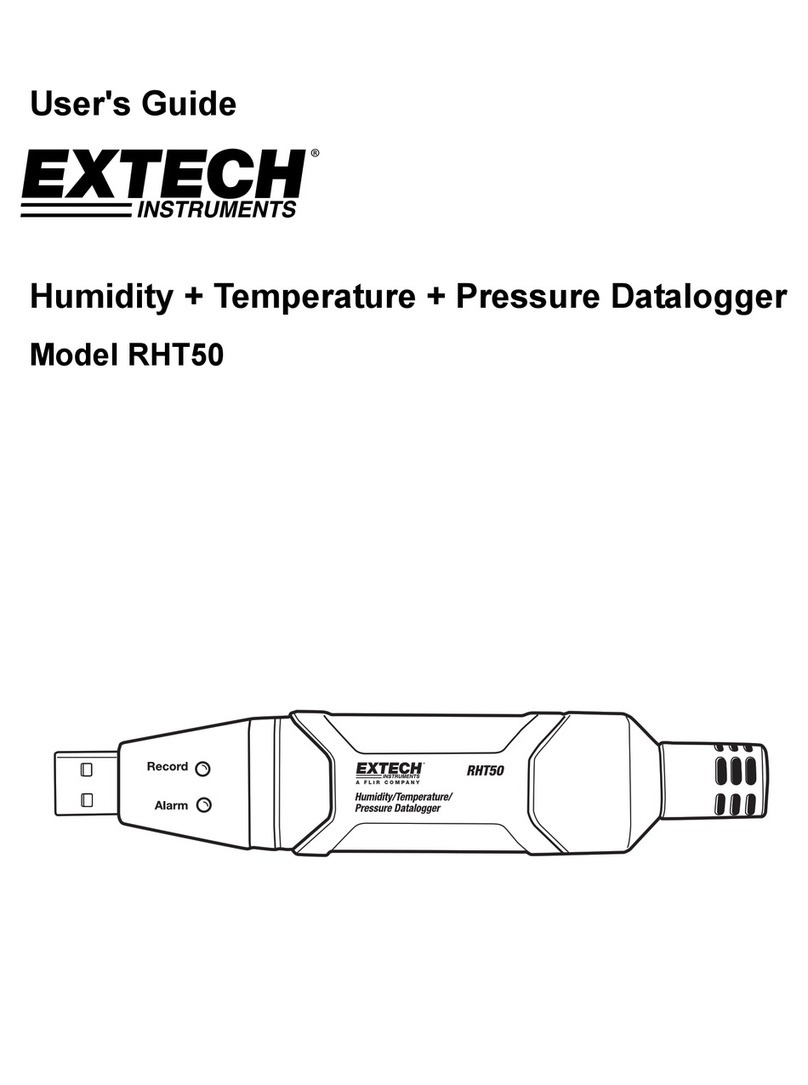
Extech Instruments
Extech Instruments RHT50 user guide

Eurotherm
Eurotherm 2208L Installation and operating instructions
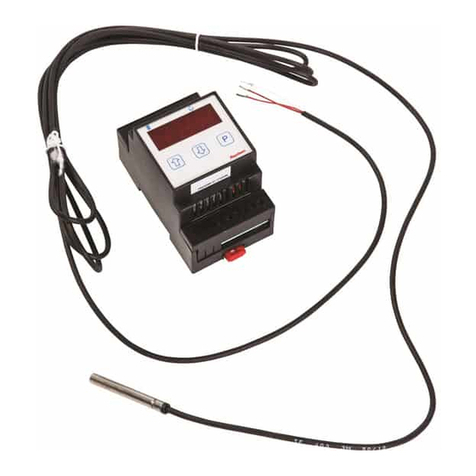
nvent
nvent 1244-006265 manual
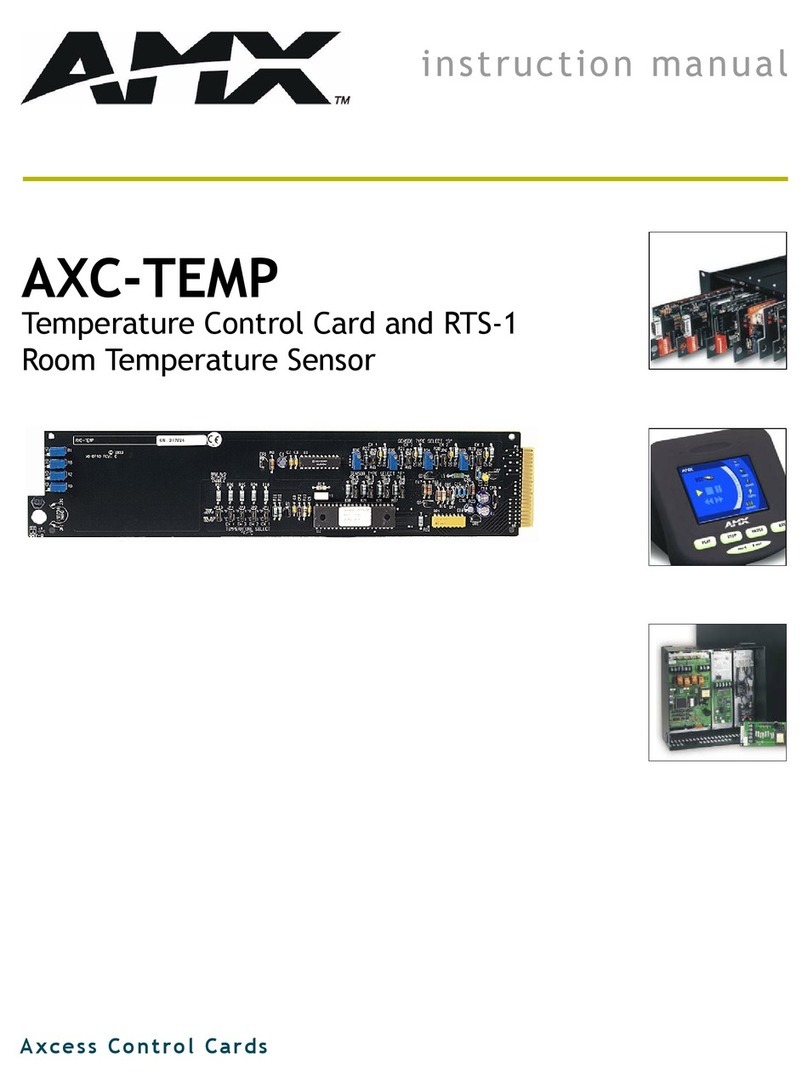
AMX
AMX AXC-TEMP AND RTS-1 TEMPERATURE CONTROL CARD AND ROOM TEMPERATURE... instruction manual
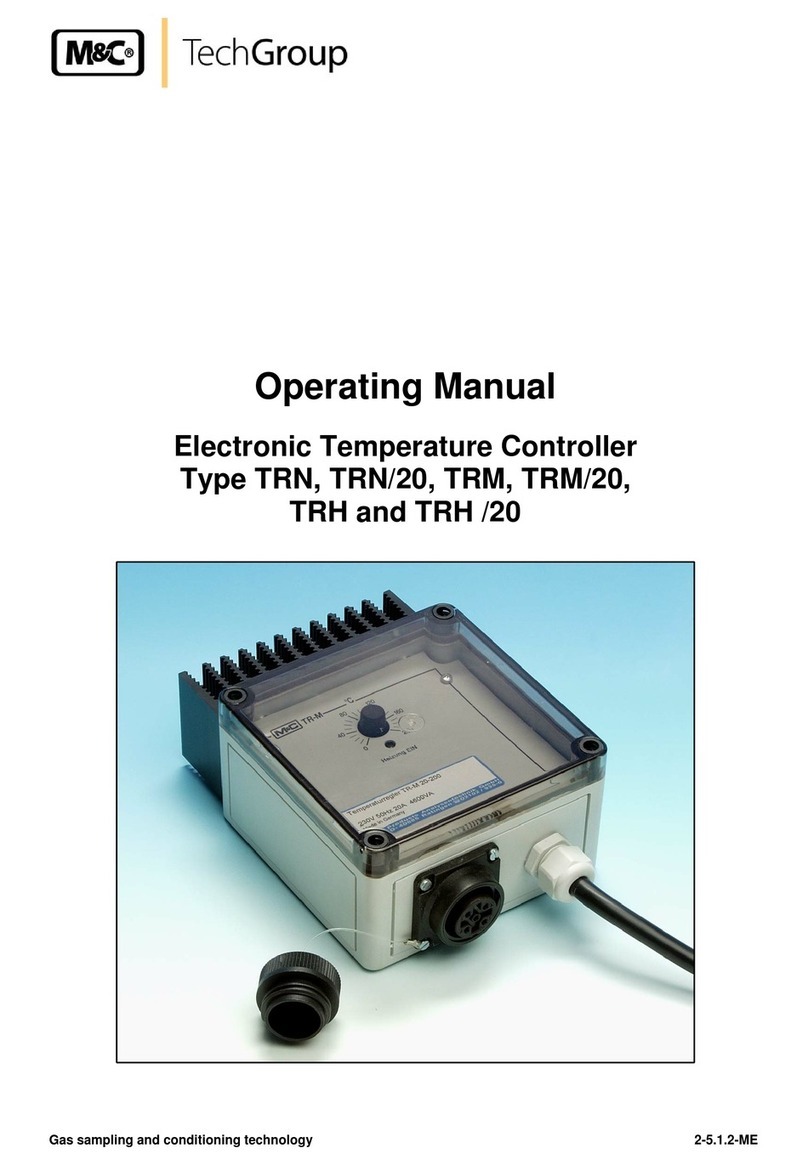
M&C
M&C TRN operating manual
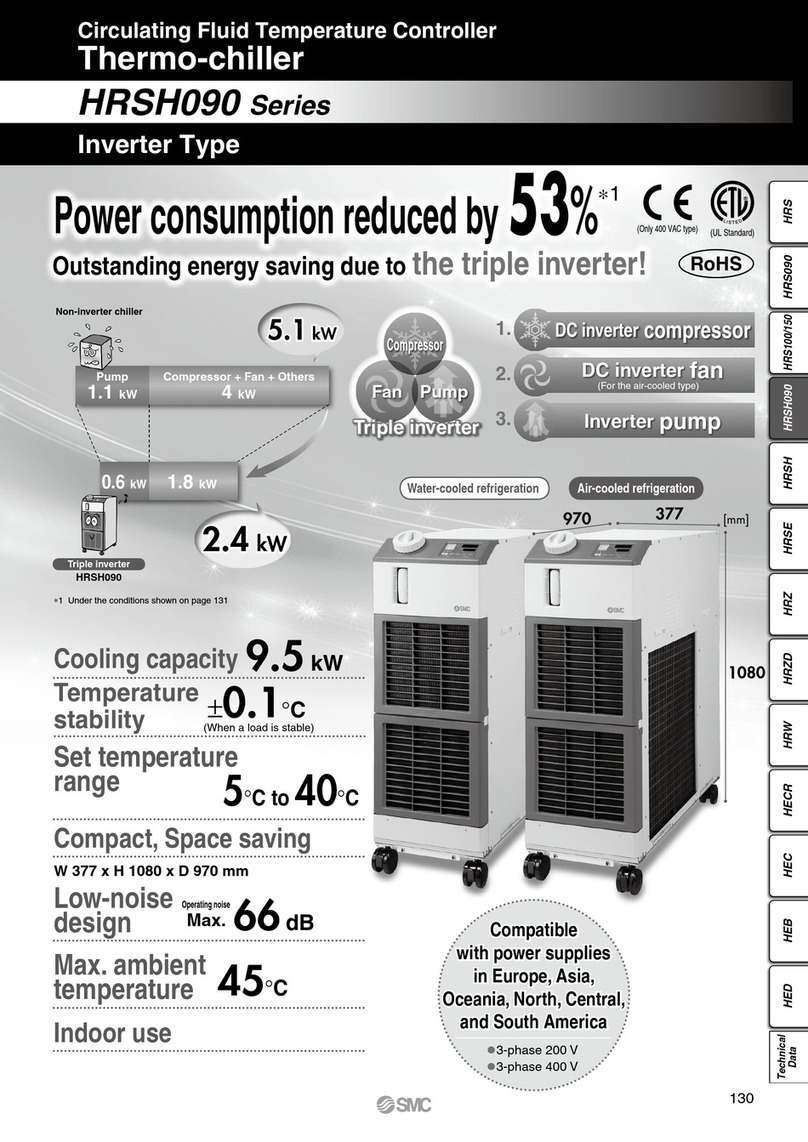
SMC Networks
SMC Networks HRSH090 Series Technical data
